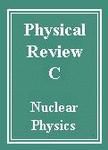版权所有:内蒙古大学图书馆 技术提供:维普资讯• 智图
内蒙古自治区呼和浩特市赛罕区大学西街235号 邮编: 010021

作者机构:Department of Physics and Jiangsu Key Laboratory for Numerical Simulation of Large Scale Complex Systems Nanjing Normal University Nanjing 210023 People's Republic of China Department of Physics Yangzhou University Yangzhou 225009 People's Republic of China
出 版 物:《Physical Review C》 (物理学评论C辑:核物理学)
年 卷 期:2020年第101卷第3期
页 面:034004-034004页
核心收录:
学科分类:07[理学] 070202[理学-粒子物理与原子核物理] 0702[理学-物理学]
基 金:National Natural Science Foundation of China, NSFC, (11535005, 11675080, 11775118) National Natural Science Foundation of China, NSFC
主 题:Nucleon-nucleon interactions Quark model
摘 要:The most strange dibaryon ΩΩ with quantum numbers S=−6, I=0, and JP=0+,1−,2+,3− is reanalyzed in the framework of a quark delocalization color screening model (QDCSM) and chiral quark model (ChQM). The ΩΩ dibaryon with JP=0+ is bound, and the one with other quantum numbers JP=1−,2+,3− are all unbound in our calculation. The low-energy scattering phase shifts, the scattering length, and the effective range of the ΩΩ dibaryon with JP=0+ also support the existence of such strange dibaryon. This dibaryon is showed to be a shallow bound state in QDCSM, while the binding energy becomes much larger in the ChQM by including the effect of the hidden color channels coupling. And the scalar nonet meson exchange in the ChQM also provides more attraction for the ΩΩ system. Experimental search for such most strange dibaryon will provide much information for understanding the hadron-hadron interactions in different quark models.